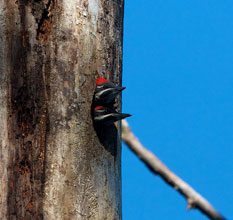 Even those of us who faced damage to property after Hurricane Dorian can probably count ourselves pretty lucky. When we think back to what we faced in Beaufort after Irma and other storms in the recent past, this first major (and it definitely was a major storm!) hurricane of the 2019 season spared our little corner of the coast the worst winds and rain and tides.
Even those of us who faced damage to property after Hurricane Dorian can probably count ourselves pretty lucky. When we think back to what we faced in Beaufort after Irma and other storms in the recent past, this first major (and it definitely was a major storm!) hurricane of the 2019 season spared our little corner of the coast the worst winds and rain and tides.
That’s not to say, of course, that there was NO damage; some areas, especially those close to the beaches and waterways, faced some flooding. Branches, trees, and power lines fell across roads and driveways, toppled into houses and structures, ripped up lawns and yards and gardens.
But it was not as bad as it could have been, not as bad as we have seen only recently.
After such a storm, the first worry is usually the structures and infrastructure, the places we live and work and shop. But damage to the lawn and garden will need to be addressed quickly, and preparations for preventing or mitigating damage from future storms can make a big difference.
It would be wise, too, to consider the effects climate change will have on our properties. We may be regularly facing during normal times some of the effects we associate with a hurricane, even without a storm to make them worse.
First things first: check the yard, the lawn, the gardens, and assess their condition and any possible damage. The most obvious damage likely is fallen limbs or trees. There may be mounds of wet leaves blown off trees, great blobs of Spanish moss, paper and trash from who-knows-where. Tall plants in the garden, shrubs, and many formerly upright perennials will have blown over, or been completely uprooted. Smaller shrubs and garden plants may have been crushed under limbs or debris, and potted plants may have been blown over, unpotted, or perhaps had their containers broken.
Look for sodden ground or standing water. There may be puddles that stay in the lawn for days; planting beds and borders may have been standing in water or in soaked soil since the first rains came. The tides may have risen so high, aided by a storm surge (or by global warming), that the entire yard – or only a portion of it – may have been under salt water for hours or days.
All of these need to be dealt with as quickly as you can get to them. Getting rid of fallen limbs,  removing piles of leaves and Spanish moss and trash, will help you see better where actual damage has been done.
removing piles of leaves and Spanish moss and trash, will help you see better where actual damage has been done.
If a plant has been uprooted from the ground or blown over with roots exposed, it often only requires replanting in its place and perhaps providing a firm stake for support until it can reestablish itself. Often it will help to prune off part of its height to reduce the stress the plant is under and to make it less likely to blow over again. Any broken parts should be removed and discarded.
Flowering annuals and perennials will likely appreciate a kind of haircut – even a severe one, cutting back damaged and expended flower stalks, removing any seedheads, even cutting back to several inches above the ground. Perhaps by doing so you will encourage a spurt of new growth and flowering.
Repot any container-grown plants which have lost their old pot. That’s a good chance to clean up the plant, trim any old roots and overgrown foliage, and supply good new potting mix for a brand new look.
Now there’s the issue of water – puddling rainwater, saturated low spots, salt water from storm winds or high tides. Salt water is the most problematic concern, since many plants can be severely damaged by salt on the leaves or on the roots. Fresh water, however, can also cause severe damage, especially if a plant sits in water for an extended period of time, cutting off the roots from access to the air in the soil. Roots must breathe! This is true for lawn grasses as well as garden plants. Finding a way to remove the water is essential, if it doesn’t simply drain away quickly or evaporate. We have in the past resorted to a small sump pump and a length of hose to drain a ‘lake’ which had persisted in the middle of our lawn and encroached on the nearby shrubbery. We were able to drain the water into a catch basin designed for overflow, but you will need to make sure that water and pollutants don’t get into waterways or neighbors’ yards.
If you find you have been flooded in salt water, even if it has drained away fairly quickly, you are likely facing some plant damage from the salt. Adding MORE fresh water can help wash away any salt remaining in the soil, so running the sprinklers can help. Having chosen plants which are salt-tolerant would have been a wise and healthy decision in building your garden, and you can do precisely that when you replace any plants you lose to hurricane damage.
A few salt-tolerant plants are: wax-myrtle; American holly; southern magnolia; beautyberry; yaupon; oleander; muhly grass; agapanthus; bee-balm; salvia leucantha. Excellent suggestions for suitable plants can be found at a good, knowledgeable nursery and at Clemson HGIC (Home and Garden Information Center).
Dorian was only the first…we have months left in our hurricane season. And generations of global warming, and rising sea levels. Be prepared!
The photos used were taken by Mindy Lucas and belong to The Island News







